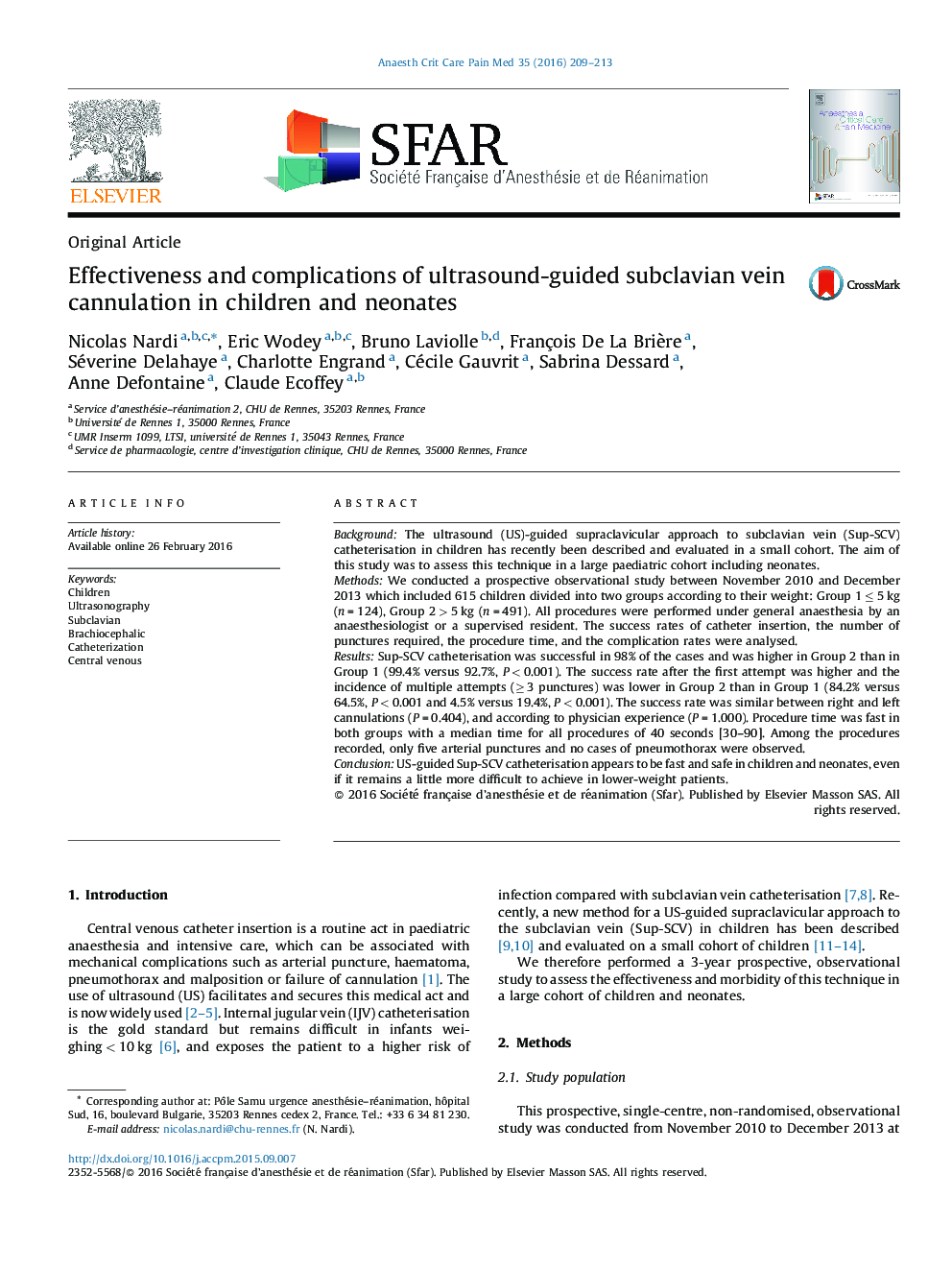| Article ID | Journal | Published Year | Pages | File Type |
|---|---|---|---|---|
| 2741878 | Anaesthesia Critical Care & Pain Medicine | 2016 | 5 Pages |
BackgroundThe ultrasound (US)-guided supraclavicular approach to subclavian vein (Sup-SCV) catheterisation in children has recently been described and evaluated in a small cohort. The aim of this study was to assess this technique in a large paediatric cohort including neonates.MethodsWe conducted a prospective observational study between November 2010 and December 2013 which included 615 children divided into two groups according to their weight: Group 1 ≤ 5 kg (n = 124), Group 2 > 5 kg (n = 491). All procedures were performed under general anaesthesia by an anaesthesiologist or a supervised resident. The success rates of catheter insertion, the number of punctures required, the procedure time, and the complication rates were analysed.ResultsSup-SCV catheterisation was successful in 98% of the cases and was higher in Group 2 than in Group 1 (99.4% versus 92.7%, P < 0.001). The success rate after the first attempt was higher and the incidence of multiple attempts (≥ 3 punctures) was lower in Group 2 than in Group 1 (84.2% versus 64.5%, P < 0.001 and 4.5% versus 19.4%, P < 0.001). The success rate was similar between right and left cannulations (P = 0.404), and according to physician experience (P = 1.000). Procedure time was fast in both groups with a median time for all procedures of 40 seconds [30–90]. Among the procedures recorded, only five arterial punctures and no cases of pneumothorax were observed.ConclusionUS-guided Sup-SCV catheterisation appears to be fast and safe in children and neonates, even if it remains a little more difficult to achieve in lower-weight patients.
